Watering and Fertilizing Houseplants
Watering and Fertilizing Houseplants
The main reason people’s houseplants die is from the way they are watered: too much or too little water kills indoor plants. Watering isn’t the only reason some plants fail, of course, but improper watering leads to the decline of plants in the majority of cases. Here are some general guidelines for watering, followed by some pointers for fertilizing your houseplants.
Tips For Watering Houseplants
- Be sure your plants are in a pot with a drainage hole, and that there is a saucer under the pot. A saucer that’s deep enough to catch a good amount of water will ensure that you’re able to water them well without danger that your floors will be flooded or stained.
- Check your plants every four days to see if the soil looks and feels dry. Touch it. Notice if the soil has pulled away from the pot, leaving a gap. That’s another sign that the soil is dry. Smaller pots can be lifted to see how heavy they are – you can get to know how much a dry plant weighs by routinely lifting up the pots.
- When a plant is dry, water it well enough so that water collects in the saucer below. It’s fine to let the pot sit in a saucer of water for a couple of hours as this lets the plant absorb all the water. If you see that there is still a good amount of water in the saucer the next day, soak the excess up with a towel or a turkey baster.
- Too little water – giving a little frequently, or applying “a lick and a promise” is as bad as not watering at all because all of the soil and roots aren’t hydrated. When you water, water well.
- Too much water will cause roots to rot. That’s why you want to water well, but then wait for a few days before watering again. Pots that stand in deep water for longer than a few hours will be too wet and cause the roots to rot.
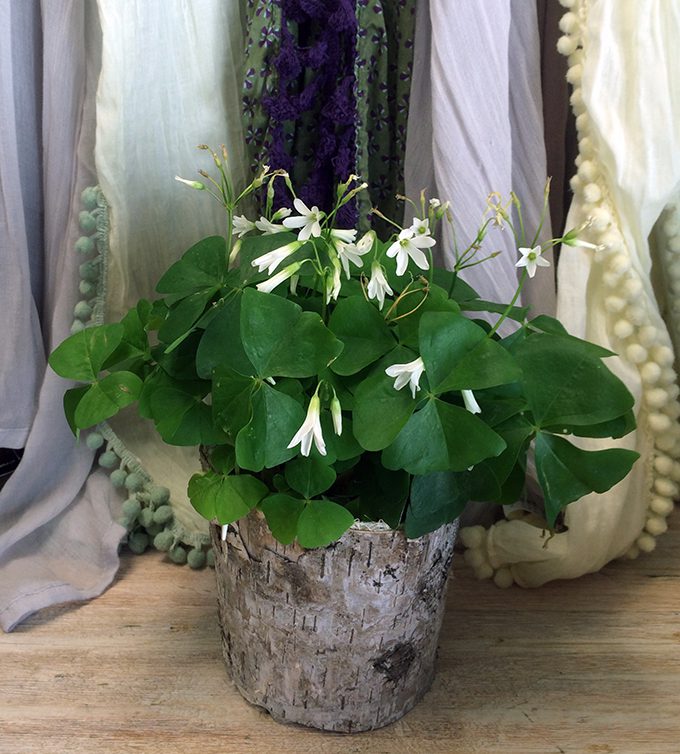
If your plant is in a decorative pot, be sure to empty any excess water that collects there after watering. Water the plant well, let it sit in the pot for an hour or two, then pour excess water out.
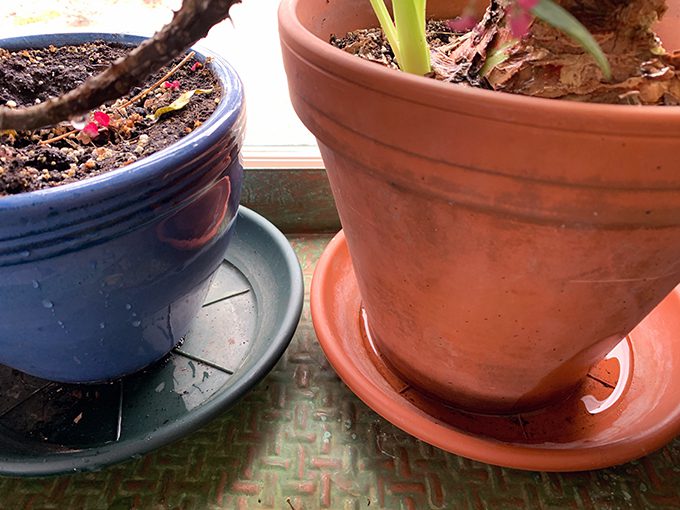
See how the water has collected in the saucer on the right? That’s not very much – it can stay in the saucer. But it signals that this plant did indeed get watered thoroughly.
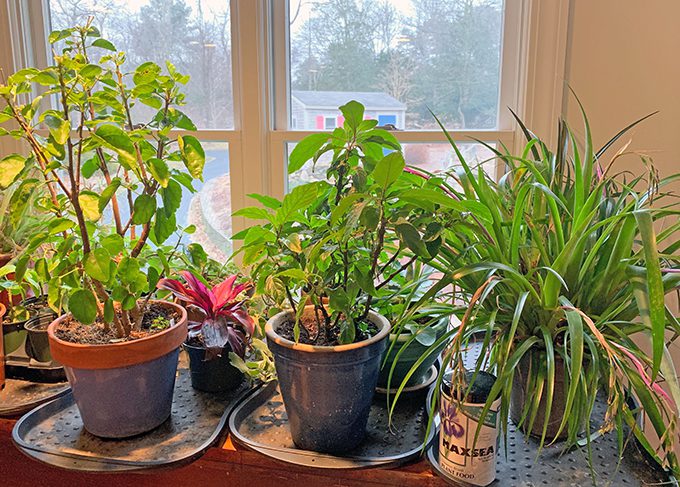
The plants in this window have trays underneath to catch the water. Notice the Maxsea fertilizer container – it’s a staff favorite for times when a synthetic fertilizer is needed.
Tips for Fertilizing Houseplants
- Never fertilize a thirsty plant. Water well first, and then fertilize the next day. This is especially true when using a synthetic fertilizer.
- Don’t fertilize houseplants from October into February, with the exception of winter-flowering plants such as some orchids, and all citrus. In general, during the time when the days are so short, the plants take a break from growing and don’t need those extra nutrients.
- Begin to fertilize again between mid-February and mid-March. Fertilize regularly during the summer growing season.
- Follow directions on the package for the amount of fertilizer you give to your plants.
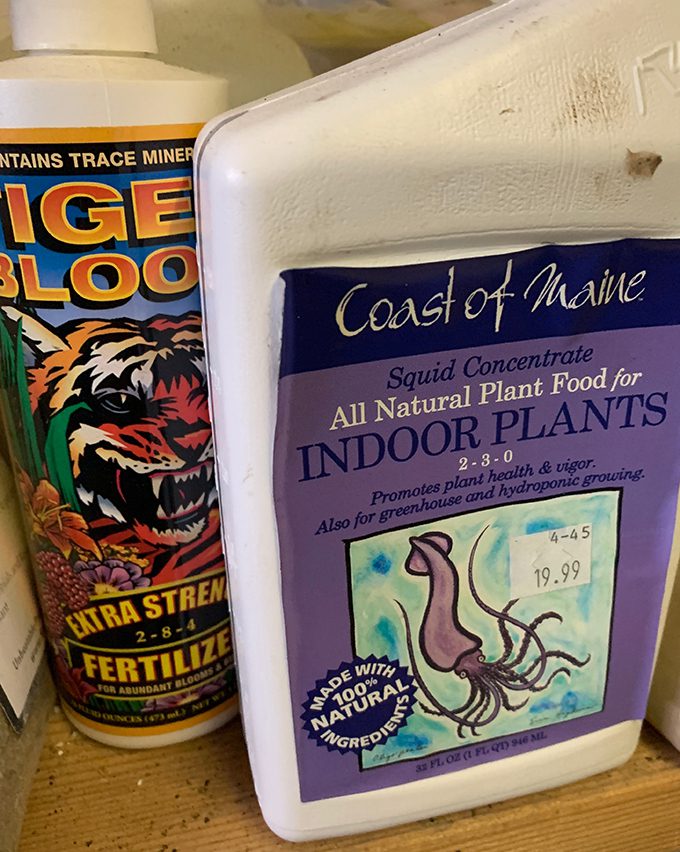
Coast of Maine makes two fertilizers that are organic and intended for indoor plants. The Tiger Bloom fertilizer is a good one to use on flowering plants such as African violets.
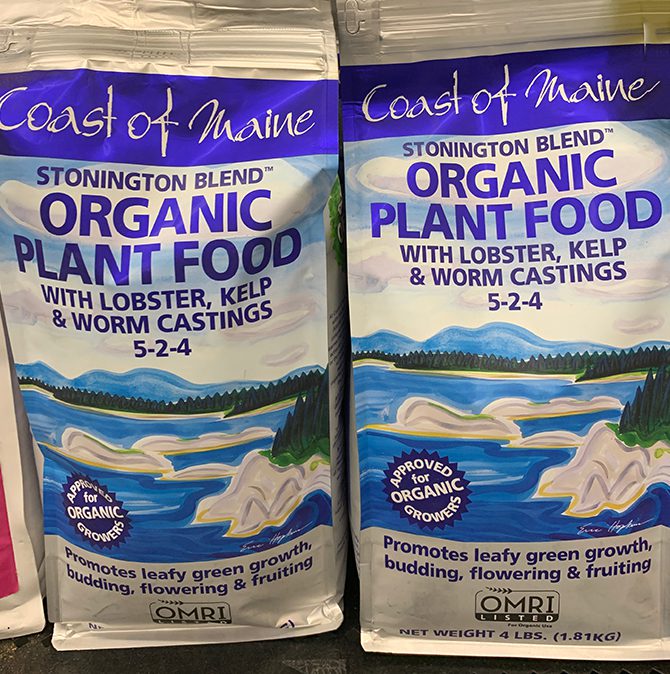
This organic fertilizer is a favorite because it has ingredients such as earth worm castings that feed the soil life as well as provide nutrients. It’s especially good for houseplants as most of them are grown for foliage and this fertilizer has a higher level of nitrogen to support leaf growth.
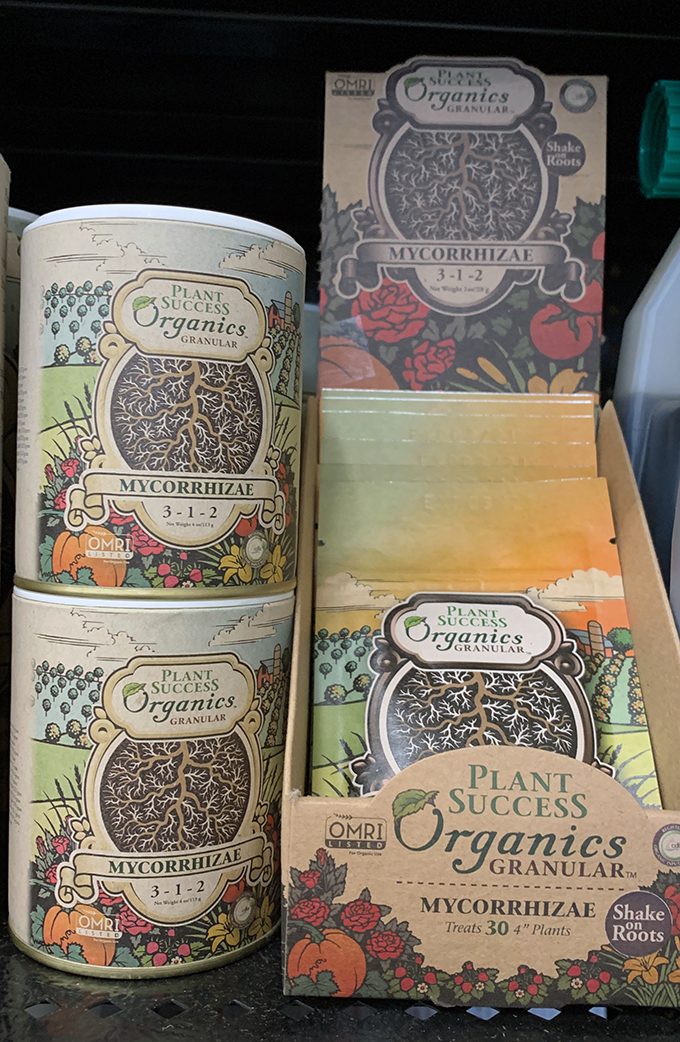
This is one of the many products that we have that contain mycorrhizae and other living soil organisms. It’s especially good for plants that have been in the same pot and soil for more than two years.
If you have questions about your indoor greenery, come into the store so we can assist you. Houseplants give our homes “breathing room” and a tranquil atmosphere of life and growth. We can help you grow that!
Subscribe To Our Newsletter
Sign up for our weekly email about sales and events.
